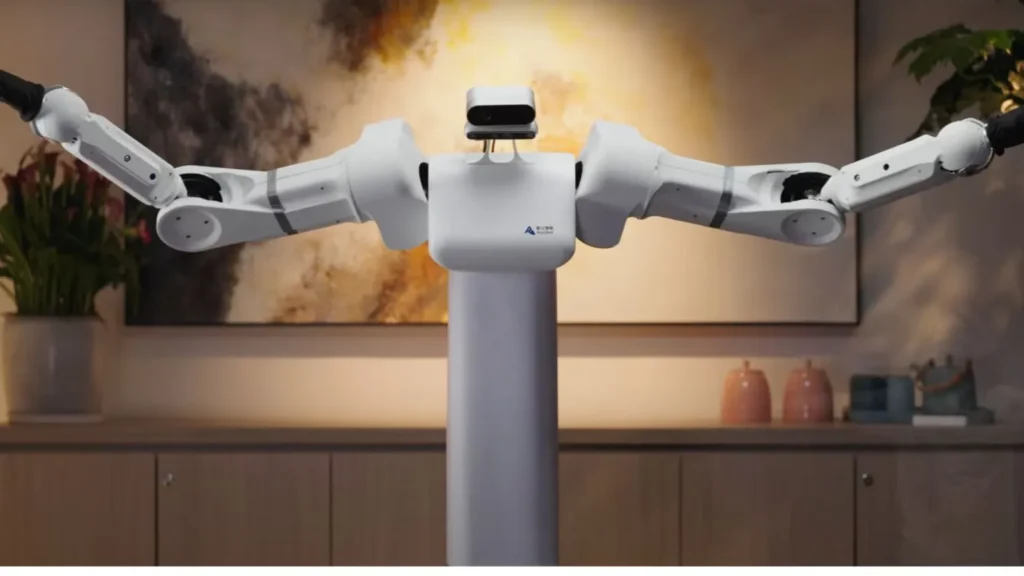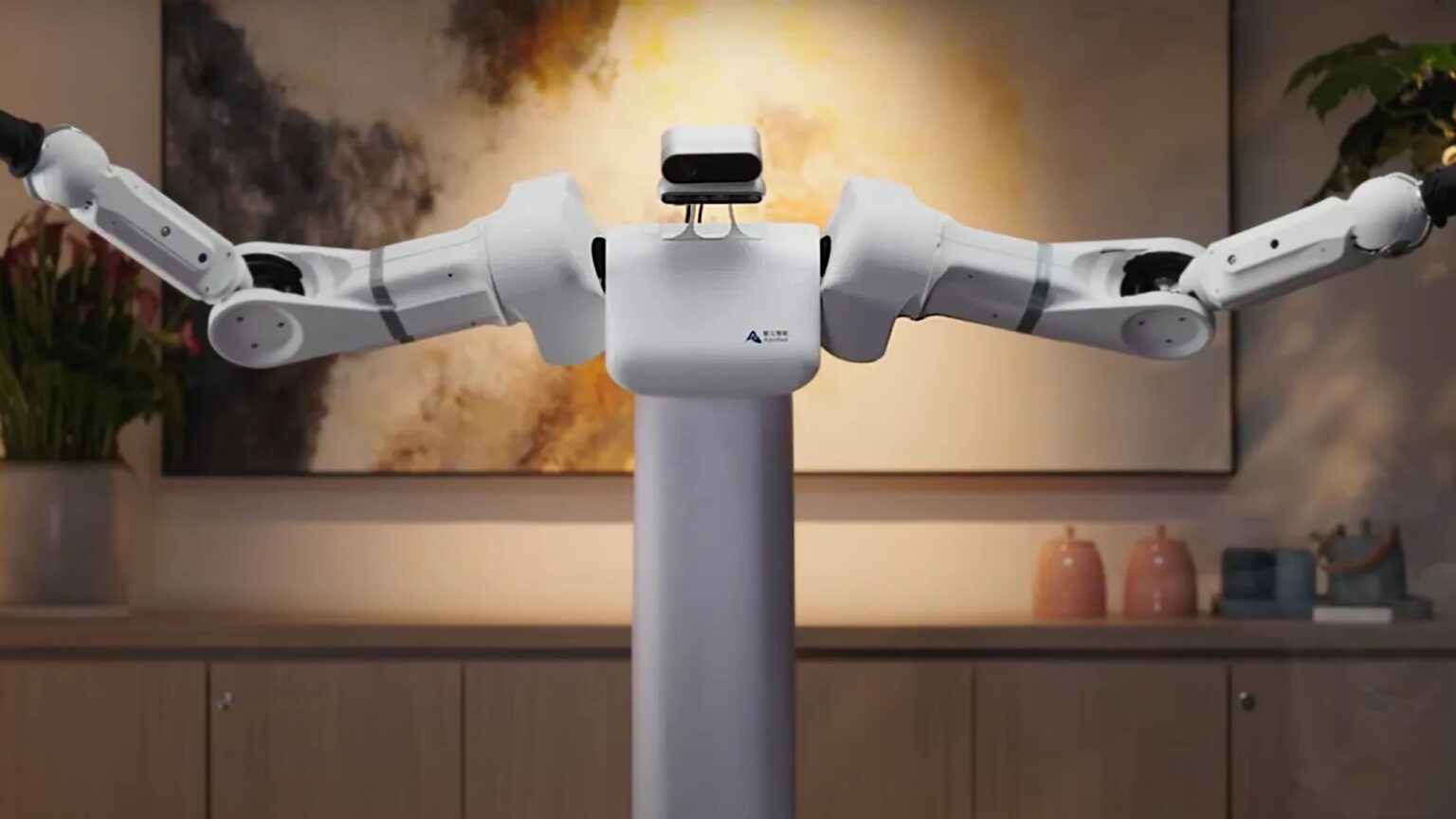Chinese tech startup Stardust Intelligence released a new robot called Astribot S1 that uses AI to complete delicate household chores such as folding clothes and making a sandwich with human-like dexterity.
The AI robot learns by imitating humans and can perform complex tasks useful to people with the speed and precision of a full grown man or woman, according to the Shenzhen-based company.
Also read: US Firm Tests AI Actors That Could Change Hollywood
Stardust AI robot: What can it do?
Stardust claims on its website that Astribot S1 is an advanced tool “closest to human operating performance.” The firm demonstrates the part humanoid robot’s rare capabilities at household tasks in a video posted on YouTube.
The video, played at normal speed without alterations, shows the AI robot doing stuff like sorting items, ironing, folding clothes, and flipping a sandwich in a frying pan, a major milestone for a robot.
Astribot S1 is so fast that it was able to smoothly pull a tablecloth from under a precarious stack of wine glasses without causing them to crumble and break. It can even peel a cucumber as well as open a bottle of wine and pour into a specially-designed glass.
According to Stardust, Astribot S1 can perform movements with a top speed of 10 meters per second and handle a payload of 22 pounds (10 kilograms) per arm.
The company says it spent a year building Astribot S1 and aims to make billions of AI-powered robotic assistants for household use. S1 has been connected to large model testing and is expected to go commercial in 2024, it added.
Stardust was founded in December 2022 by ex-Tencent Robotics Laboratory executive Lai Jie, who has also worked for Baidu and the Hong Kong Polytechnic University. Jie led the development of Tencent’s wheel-legged robot Ollie and others, the company says.
The other five core founding team members have backgrounds in top technology companies like Tencent, Google, and Huawei.
The name Astribot is inspired by the Latin proverb “ad astra per aspera”, meaning “a journey through hardship to reach stardust”. Stardust says the definition represents its long-term goals to the “development and popularization of AI robot technology.”
How does it work
Stardust claims to be building “a new generation of AI robots that can be implemented [and] can learn, think and work like people.” These AI robots purpotedly use the same tools used by humans “to help people complete boring, difficult or dangerous tasks.”
The company did not share specific technical details in relation to how Astribot S1 was trained. However, some media reports explain that the AI robot is not entirely a so-called humanoid robot.

Instead, Astribot S1 “uses a design that combines a wheeled base with the upper body of a humanoid, mainly aimed at research and other scenarios”.
The AI robot is reportedly underpinned by software that supports “multiple data collection methods such as video, motion capture, and remote operation.” Astribot S1 learns using techniques such as imitation, reinforcement learning and multimodal large models.
The robot improves its intelligence continuously and is able to generalize across multiple tasks with software updates. Its high-performance motor transmission system “has undergone several iterations, integrating control, sensing, transmission, and driving into a complex system,” per industry media.
AI-powered robots have seen a steady rise in recent months due to major advances in artificial intelligence technology, helping robotics companies to train and develop products faster.
ChatGPT-creator OpenAI launched a laundry-folding robot built in partnership with Norwegian firm 1X, which shows “soft-touch” capabilities. The company also released another robot with Figure, demonstrating natural language reasoning skills.
Boston Dynamics showcased its dextrous Atlas robot and China’s UBTech impressed with Walker S, a speaking bot known for its gentle touch.









 and then
and then